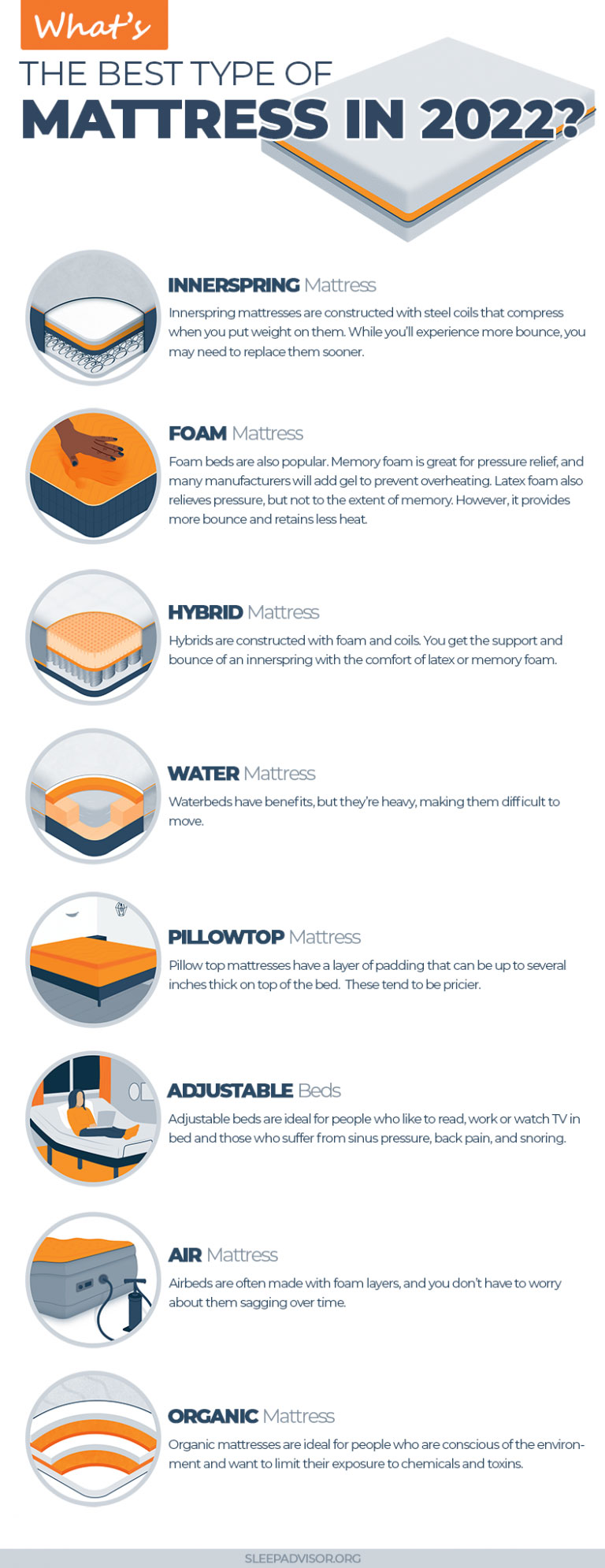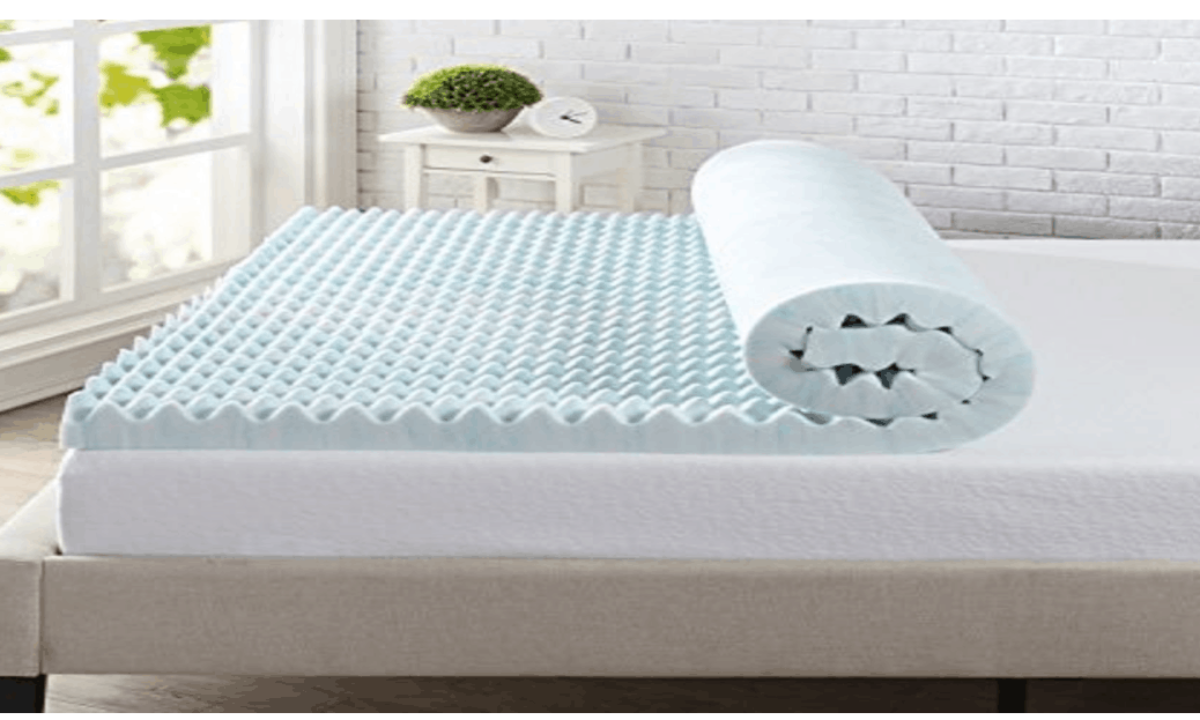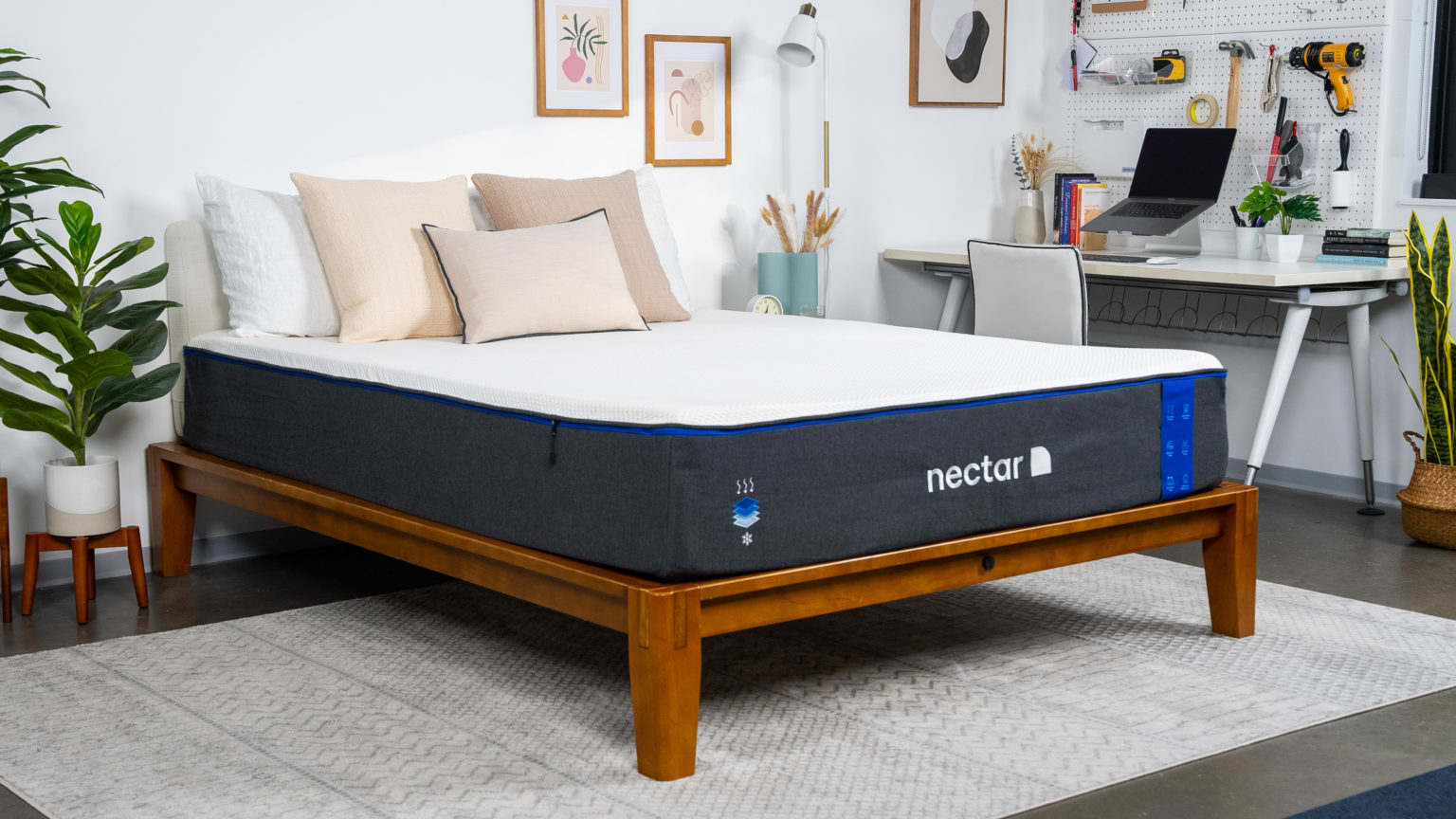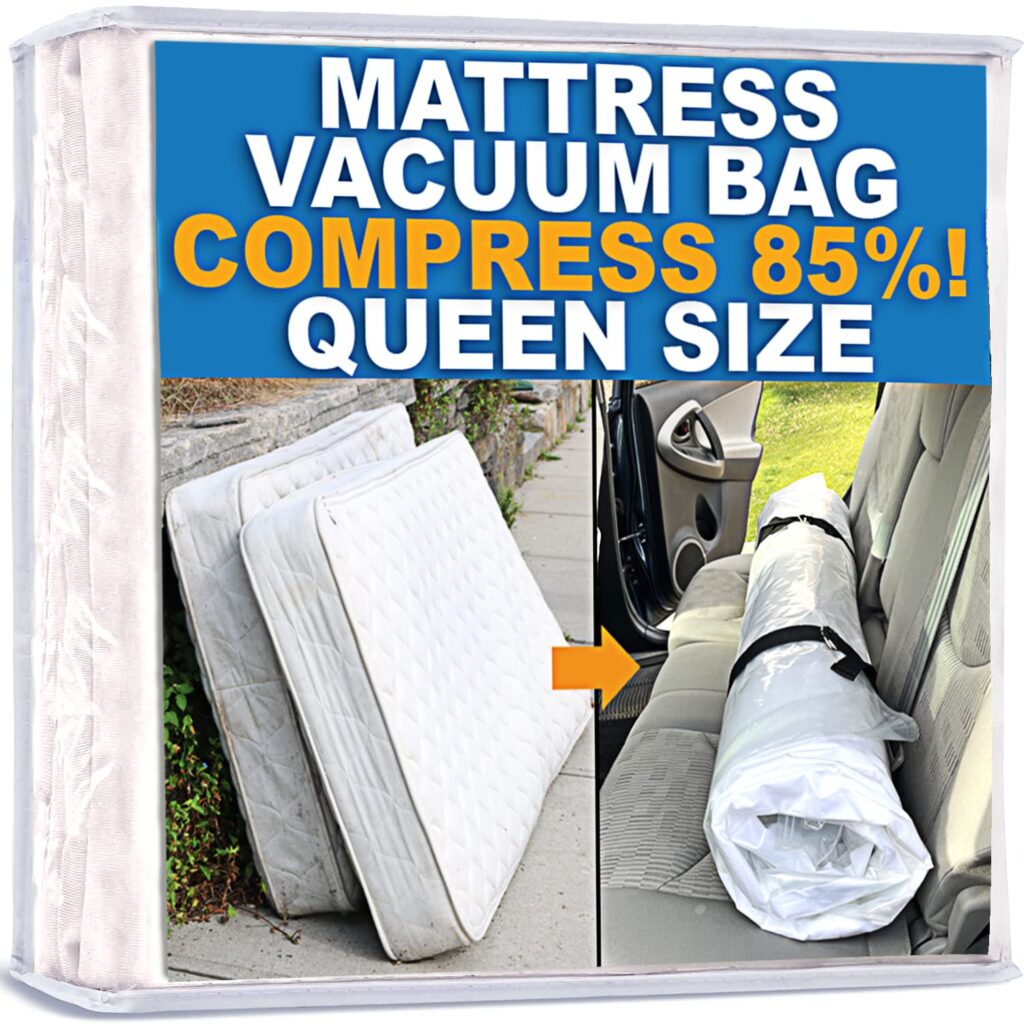Are you looking for a way to compress your memory foam mattress so that you can move it more easily? If so, this step-by-step guide will explain how to compress a memory foam mattress, and help you get the job done quickly and safely. With this guide, you’ll be able to efficiently compress your memory foam mattress and get it ready for transport or storage. So, let’s get started and learn how to compress a memory foam mattress!
Steps to Compress a Memory Foam Mattress

Vacuum Seal Bags
Using vacuum seal bags is an effective way to compress memory foam mattresses. Place the mattress in the bag and use a vacuum cleaner to suck the air out of it. This will shrink the mattress size and make it easier to transport or store.
Rolling and Compression
Another way to compress memory foam mattresses is by rolling and compressing them. Lay the mattress flat on the floor and start rolling it from one end to the other. As you roll, press down on the mattress to squeeze out the air. This will help to make the mattress more compact.
Sealing with Wrapping Materials
Once you have compressed the mattress, you can further reduce its size by sealing it with wrapping materials. Wrap the mattress in plastic or shrink wrap and seal the edges tightly. This will help to prevent air from getting in and make the mattress even more compact.
By following these steps, you can easily shrink a memory foam mattress and make it easier to transport or store.
Benefits of Compressing a Memory Foam Mattress

Compressing a memory foam mattress offers several advantages that can help you sleep better and extend the mattress’ lifespan. Compressing a memory foam mattress at home can help improve your sleeping posture, reduce motion transfer, and provide you with a clearer and better night’s sleep.
- Better Posture: Compressing a memory foam mattress helps to reduce pressure points, allowing your body to rest in a more natural position and improving your overall sleeping posture.
- Reduced Motion Transfer: Memory foam compresses and absorbs motion, so compressing a mattress helps to reduce motion transfer and keep your sleep uninterrupted.
- Improved Comfortability: Compressing a mattress can help to improve comfort and provide better overall support for your body.
- Extended Lifespan: Compressing a memory foam mattress helps to extend its lifespan by reducing wear and tear.
Overall, compressing a memory foam mattress at home can help you improve your sleep quality and experience a more restful night’s sleep.
How to Decompress a Memory Foam Mattress

- Vacuum on Low Setting: Vacuuming your memory foam mattress on a low setting will help to remove any dust, dirt or debris that may be stuck in the mattress fibers. This will help to restore the cushioning and breathability of the mattress.
- Flip the Mattress: Flipping the mattress will help to redistribute the foam evenly. This will help to ensure that the mattress does not become lumpy or misshapen over time.
- Allow the Mattress to Air Out: Allowing your mattress to air out for a few hours can help it to decompress. This will allow the mattress to regain its original shape and size.
- Rotate the Mattress: Rotating the mattress periodically will help to keep the mattress from becoming misshapen. This will also help to prevent any lumps or dips in the mattress from forming.
- Place a Mattress Cover: Placing a mattress cover on your memory foam mattress can help to protect it from dirt, dust, and debris. This will help to keep the mattress in its original shape for a longer period of time.
Tips for Compressing a Memory Foam Mattress

- Measure Your Mattress Before Compressing: Before you attempt to compress your memory foam mattress, it is important to measure it. Most mattresses are made to fit a standard mattress size, but measuring it ensures that you get the best fit for your mattress when you compress it.
- Make Sure You Have Enough Space: When you compress your memory foam mattress, it is going to take up a lot of space. Make sure you have enough room to fit the mattress in the space where you plan to store it.
- Use a Vacuum Sealer: A vacuum sealer is the best way to compress your memory foam mattress. It is an effective way to reduce the amount of space the mattress will take up and will help keep your mattress in excellent condition.
- Use a Compression Bag: Another option for compressing your memory foam mattress is to use a compression bag. This will allow you to reduce the amount of space the mattress takes up and make it easier to store.
- Roll the Mattress: One of the easiest ways to compress your memory foam mattress is to roll it up. This will make it much easier to store, and it will also make it easier to move the mattress if you need to.
- Wrap the Mattress: If you plan to store your memory foam mattress for an extended period of time, it is a good idea to wrap it in a protective material. This will help protect the mattress from dirt, dust, and moisture.
Alternatives to Compressing a Memory Foam Mattress

If a mattress is too large to be compressed using the traditional methods, there are a few alternatives that can be used. These alternatives are generally more time-consuming and expensive, but can be worth the effort in some cases.
1. Vacuum-Sealed Packaging
This option involves having the mattress compressed and vacuum-sealed in a plastic bag. The bag is then tightly wrapped and sealed. This method is very effective, as it allows for a much smaller package size, but can be expensive and time-consuming.
2. Shipping Crate
Another option is to have the mattress shipped in a wooden crate. This allows for a much smaller package size, and can be done relatively quickly. However, it is important to note that this method can be expensive, and some mattresses may not fit in a standard-sized crate.
3. Professional Mattress-Moving Service
If the mattress is too large to be compressed or shipped, a professional mattress-moving service can be hired to move the mattress. This is usually the most expensive option, but it is often the only way to move a mattress of this size.
4. Rolled-Up Mattress
This method involves rolling up the mattress and securing it with straps. This can be done quickly and cheaply, but it is important to note that the mattress must be unrolled and allowed to expand after being moved. This can take several days, depending on the size of the mattress.
5. Mattress Bags
This method involves using a special mattress bag to wrap and move the mattress. This is a relatively inexpensive option, and the mattress can be moved without having to be compressed. However, it is important to note that the bag can only be used once, and the mattress must be unrolled and allowed to expand after being moved.
6. Mattress Covers
This involves using a special mattress cover to wrap and move the mattress. This is a relatively inexpensive option, and the mattress can be moved without having to be compressed. However, it is important to note that the cover can only be used once, and the mattress must be unrolled and allowed to expand after being moved.
| Method | Time | Cost |
|---|---|---|
| Vacuum-Sealed Packaging | Time-consuming | Expensive |
| Shipping Crate | Relatively Quick | Expensive |
| Professional Mattress-Moving Service | Varies | Expensive |
| Rolled-Up Mattress | Quick | Inexpensive |
| Mattress Bags | Relatively Quick | Inexpensive |
| Mattress Covers | Relatively Quick | Inexpensive |
Safety Precautions
Before beginning, it is important to take the necessary safety precautions. Always wear the appropriate safety gear including gloves, safety glasses, and a mask. Make sure to work in a well-ventilated area and ensure the area is free of any flammable materials. Additionally, make sure to disconnect the power and turn off the switch to avoid any electrocution. Lastly, keep all sharp objects away from the mattress, as this will help avoid any potential punctures or damages.
Frequently Asked Questions
What tools do I need to compress a memory foam mattress?
- Vacuum cleaner: A vacuum cleaner with a long enough hose to reach the mattress is necessary to compress the mattress.
- Mattress compression bag: Compression bags come in different sizes and can be used to compress the mattress.
- Tape measure: A tape measure is useful to measure the mattress before purchasing the compression bag.
- Sharp knife: A sharp knife can be used to cut the mattress into smaller pieces, if needed, before compressing it.
How much time should I allow for compressing a memory foam mattress?
Compressing a memory foam mattress can take anywhere from an hour to several hours, depending on the mattress size and thickness. It is recommended to allow at least an hour to compress the mattress. As the mattress is being compressed, it is important to take periodic breaks to allow the mattress to adjust to its new shape.
Does Compressing a Memory Foam Mattress Affect Its Comfort and Support?
Yes. Compressing a memory foam mattress can affect its comfort and support in several ways:
- It can cause the mattress to lose some of its support and firmness, making it less comfortable to sleep on.
- It can cause the mattress to become lumpy and uneven, making it harder to find a comfortable sleeping position.
- It can cause the mattress to become permanently compressed and unable to regain its original shape, leading to less support and comfort.
Therefore, it is important to be careful when compressing a memory foam mattress and to follow the instructions provided by the manufacturer.
Is it Safe to Compress a Memory Foam Mattress for Long-Term Storage?
Compressing a memory foam mattress for long-term storage is safe as long as you take the proper steps. Make sure you use a vacuum bag that’s designed for memory foam and use a vacuum cleaner with a strong suction to ensure the mattress is compressed as much as possible. Place the mattress in a cool, dry place for long-term storage and make sure you unpack it and allow it to return to its original shape before using it.
Can a Memory Foam Mattress be Compressed and Rolled for Shipping?
Yes. Memory foam mattresses can be compressed and rolled for shipping. This compression process reduces the size of the mattress and makes it easier and more affordable to transport. The mattress can be compressed with a vacuum or a compressing machine and then rolled up for shipping. However, it is important to note that the mattress must be fully decompressed before use for optimal performance and comfort.
Conclusion
Compressing a memory foam mattress is a great way to make it easier to transport and store. It is important to make sure that you follow the steps correctly and safely to avoid damaging the mattress or causing injury. Once you have compressed the mattress, you can store it in a smaller space and move it more easily.






